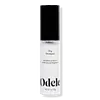What's inside
What's inside
 Key Ingredients
Key Ingredients

 Benefits
Benefits

 Concerns
Concerns

 Ingredients Side-by-side
Ingredients Side-by-side

Zea Mays Starch
AbsorbentMaranta Arundinacea Root Powder
Skin ConditioningOryza Sativa Starch
AbsorbentKaolin
AbrasiveHydrated Silica
AbrasiveSodium Bicarbonate
AbrasiveLaminaria Digitata Extract
Skin ProtectingChlorella Vulgaris Extract
Skin ConditioningLavandula Stoechas Extract
MaskingSaccharide Isomerate
HumectantSea Water
HumectantGlycerin
HumectantCetrimonium Chloride
AntimicrobialWater
Skin ConditioningParfum
MaskingIsobutane
Propane
Alcohol Denat.
AntimicrobialDimethylimidazolidinone Rice Starch
AbsorbentWater
Skin ConditioningCetrimonium Chloride
AntimicrobialSea Salt
AbrasiveButylated Pvp
Amp-Isostearoyl Hydrolyzed Wheat Protein
CleansingPanthenol
Skin ConditioningPentylene Glycol
Skin ConditioningRhodiola Rosea Extract
EmollientAluminum Starch Octenylsuccinate
AbsorbentAcrylates Copolymer
Magnesium Carbonate
AbsorbentZeolite
AbsorbentStearalkonium Hectorite
Gel FormingParfum
MaskingButylphenyl Methylpropional
PerfumingLinalool
PerfumingCitronellol
PerfumingGeraniol
PerfumingBenzyl Salicylate
PerfumingIsobutane, Propane, Alcohol Denat., Dimethylimidazolidinone Rice Starch, Water, Cetrimonium Chloride, Sea Salt, Butylated Pvp, Amp-Isostearoyl Hydrolyzed Wheat Protein, Panthenol, Pentylene Glycol, Rhodiola Rosea Extract, Aluminum Starch Octenylsuccinate, Acrylates Copolymer, Magnesium Carbonate, Zeolite, Stearalkonium Hectorite, Parfum, Butylphenyl Methylpropional, Linalool, Citronellol, Geraniol, Benzyl Salicylate
Ingredients Explained
These ingredients are found in both products.
Ingredients higher up in an ingredient list are typically present in a larger amount.
This ingredient is a preservative, antimicrobial, and emulsifier. It is often used in cosmetics for its ability to cleanse, condition, and reduce static.
Cetrimonium chloride is a quaternary ammonium salt, meaning it has a water-soluble structure.
Parfum is a catch-all term for an ingredient or more that is used to give a scent to products.
Also called "fragrance", this ingredient can be a blend of hundreds of chemicals or plant oils. This means every product with "fragrance" or "parfum" in the ingredients list is a different mixture.
For instance, Habanolide is a proprietary trade name for a specific aroma chemical. When used as a fragrance ingredient in cosmetics, most aroma chemicals fall under the broad labeling category of “FRAGRANCE” or “PARFUM” according to EU and US regulations.
The term 'parfum' or 'fragrance' is not regulated in many countries. In many cases, it is up to the brand to define this term.
For instance, many brands choose to label themselves as "fragrance-free" because they are not using synthetic fragrances. However, their products may still contain ingredients such as essential oils that are considered a fragrance by INCI standards.
One example is Calendula flower extract. Calendula is an essential oil that still imparts a scent or 'fragrance'.
Depending on the blend, the ingredients in the mixture can cause allergies and sensitivities on the skin. Some ingredients that are known EU allergens include linalool and citronellol.
Parfum can also be used to mask or cover an unpleasant scent.
The bottom line is: not all fragrances/parfum/ingredients are created equally. If you are worried about fragrances, we recommend taking a closer look at an ingredient. And of course, we always recommend speaking with a professional.
Learn more about ParfumWater. It's the most common cosmetic ingredient of all. You'll usually see it at the top of ingredient lists, meaning that it makes up the largest part of the product.
So why is it so popular? Water most often acts as a solvent - this means that it helps dissolve other ingredients into the formulation.
You'll also recognize water as that liquid we all need to stay alive. If you see this, drink a glass of water. Stay hydrated!
Learn more about Water